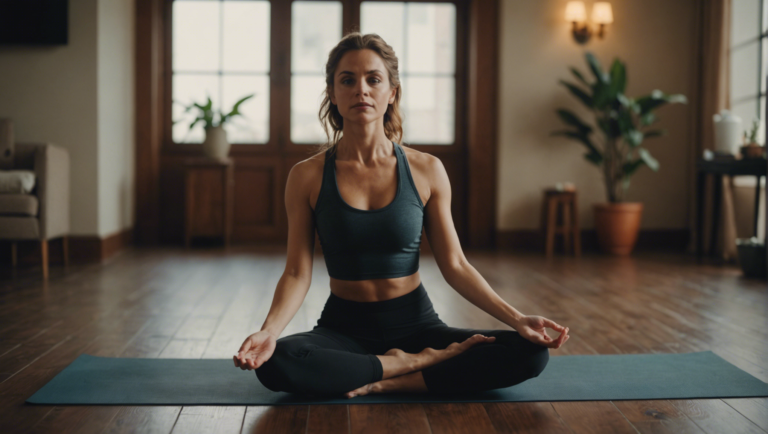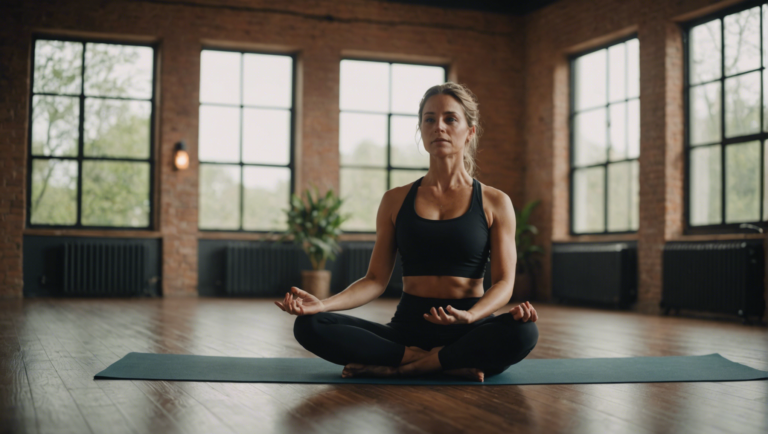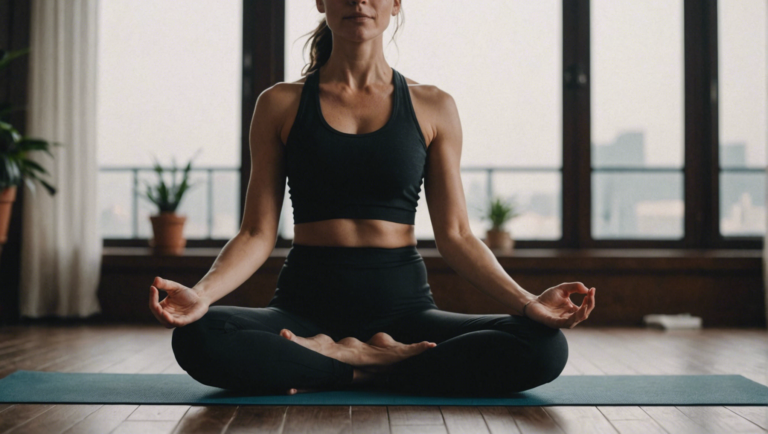Which Yoga Is Best For Low Bp
Discovering the Best Yoga Practices for Managing Low Blood Pressure
Navigating the landscape of yoga can be both intriguing and overwhelming, especially when the goal is to manage or improve a specific health condition such as low blood pressure (hypotension). The connection between yoga and blood pressure management has been a subject of interest for both practitioners and medical professionals. In the quest to identify which yoga practices are particularly beneficial for individuals dealing with low blood pressure, a deeper understanding of yoga’s multifaceted approach to wellness is essential.
Unveiling the Symbiosis between Yoga and Low Blood Pressure
Yoga, with its ancient roots and holistic approach to health, offers a wide array of practices that emphasize balance, mindfulness, and the harmonization of the body’s systems. For those experiencing low blood pressure, certain yoga practices stand out for their capacity to stabilize and invigorate the body’s circulatory system. Engaging in these practices may not only alleviate symptoms associated with hypotension but also enhance overall vitality and well-being.
The Prime Yoga Asanas for Elevating Blood Pressure
Among the plethora of yoga poses, a few have been identified as particularly advantageous for boosting blood pressure to healthier levels. These asanas focus on gentle inversions and restorative positions that encourage blood flow without causing strain or excessive stress on the body.
-
Sukhasana (Easy Pose) with Forward Bend: This gentle forward bend promotes a calming effect on the nervous system while mildly increasing circulation, especially beneficial for initiating a yoga routine.
-
Shishuasana (Child Pose): By lowering the head and heart, this pose aids in the gentle regulation of blood flow, counteracting the effects of low blood pressure.
-
Viparita Karani (Legs Up the Wall Pose): This mild inversion is renowned for its ability to reverse blood flow, providing relief from symptoms of hypotension. It is a passive, restorative pose that requires minimal effort yet offers significant benefits.
Pranayama: Breathing Techniques as a Catalyst for Stabilizing Blood Pressure
Pranayama, the art of breath control, is a cornerstone of yoga practice that has profound effects on the body’s physiological processes. Specific breathing exercises can be particularly efficacious for those looking to manage low blood pressure:
-
Anulom Vilom (Alternate Nostril Breathing): This balanced breathing technique helps to regulate the nervous system, potentially stabilizing blood pressure levels.
-
Bhramari (Bee Breath): Known for its immediate relaxing effects, Bhramari can aid in relieving stress, a common contributor to blood pressure fluctuations.
The Role of Yoga Nidra and Meditation in Restoring Balance
In the realm of yoga, physical postures are just one aspect of a comprehensive system aimed at cultivating balance and health. Yoga Nidra and meditation are practices focused on the mind’s influence over the body:
-
Yoga Nidra (Yogic Sleep): This deep relaxation technique guides the practitioner into a state of conscious sleep, which can significantly alleviate stress and thus positively affect blood pressure regulation.
-
Meditation: Daily meditation practice can have a beneficial impact on blood pressure levels by promoting overall relaxation and stress reduction.
Tailoring Your Yoga Practice to Your Needs
While the mentioned practices are generally safe and beneficial for individuals with low blood pressure, it’s crucial to approach yoga with mindfulness and attentiveness to your body’s needs and limitations. Starting with gentle poses and gradually incorporating more as comfort and stability improve is advisable. Consulting with a healthcare provider before beginning any new exercise regimen, especially when dealing with health concerns like hypotension, is essential.
Yoga offers a holistic approach to managing low blood pressure, emphasizing gentle movement, mindful breathing, and mental tranquility. By incorporating specific asanas, pranayama techniques, and relaxation practices, individuals can effectively navigate their symptoms and enhance their overall quality of life. However, the journey into yoga is profoundly personal, and what works best can vary from one individual to another. Listening to one’s body and potentially working with a knowledgeable yoga instructor can ensure the practice is both safe and beneficial.
Understanding the Role of Yoga in Balancing Blood Pressure: A Comprehensive Guide
Yoga, an ancient practice rooted in over 5000 years of Indian philosophy, has evolved into a holistic approach to wellness, addressing the mind, body, and soul. Its benefits span a wide spectrum, from enhancing flexibility and strength to contributing profoundly to mental health. Among its numerous advantages, yoga’s impact on cardiovascular health, particularly in managing and preventing low blood pressure (hypotension), has garnered significant attention. This comprehensive guide delves into the intricate relationship between yoga and blood pressure regulation, shedding light on how specific yoga practices can promote a balanced and healthy circulatory system.
The Science Behind Yoga and Blood Pressure Regulation
Yoga’s efficacy in balancing blood pressure lies in its multifaceted approach, combining physical postures, breathing techniques, and meditation to induce a state of relaxation and stress reduction. Stress-induced hypertension is a common ailment in today’s fast-paced world, and yoga’s ability to counteract stress is one of its key benefits for blood pressure management. By eliciting the body’s relaxation response, yoga practices can lower cortisol levels, enhance blood flow, and, consequently, stabilize blood pressure.
Identifying the Best Yoga Practices for Low Blood Pressure
While numerous yoga asanas (poses) can benefit cardiovascular health, certain poses are particularly effective for individuals experiencing low blood pressure. These practices focus on promoting circulation, enhancing vitality, and gradually improving the body’s ability to regulate blood pressure.
1. Shavasana (Corpse Pose): Shavasana is renowned for its ability to bring the body into a deep state of rest, significantly reducing stress and anxiety. Lying flat on the back and allowing every muscle to relax helps in normalizing blood pressure by calming the nervous system.
2. Baddha Konasana (Butterfly Pose): This seated pose improves circulation, especially in the lower limbs and pelvic area, which can be particularly beneficial for those with low blood pressure.
3. Viparita Karani (Legs Up the Wall Pose): This gentle inversion helps in promoting venous return from the legs to the heart, which can aid in preventing blood from pooling in the lower extremities and assist in stabilizing blood pressure levels.
4. Adho Mukha Svanasana (Downward-Facing Dog Pose): This inverted pose enhances blood flow to the brain and heart, aiding in the regulation of blood pressure. Practicing it regularly can contribute to a more balanced circulatory system.
Integrating Yoga into a Holistic Approach for Low Blood Pressure
While yoga offers a powerful tool for managing low blood pressure, it should be complemented with a healthy lifestyle for the best outcomes. A balanced diet, adequate hydration, and regular physical activity, in conjunction with yoga, form a robust foundation for maintaining optimal blood pressure levels.
Moreover, it’s important to consult with a healthcare professional before starting any new exercise regimen, especially for individuals with existing health concerns like hypotension. Tailoring yoga practices to suit individual needs and limitations is crucial to ensure safety and maximize benefits.
Emphasizing the Need for Consistency and Mindfulness
Consistency in practice is key to harnessing the blood pressure-regulating benefits of yoga. Engaging in yoga regularly can create lasting changes, not only in physical health but also in mental and emotional well-being. Additionally, incorporating mindfulness and meditation into one’s yoga practice can amplify the stress-reducing effects, further supporting blood pressure regulation.
Yoga transcends mere physical exercise; it is a journey towards inner balance that reflects in one’s overall health, including the management of low blood pressure. The beauty of yoga lies in its adaptability; it offers something for everyone, regardless of age or fitness level. By choosing the right practices and approaching them with patience and dedication, individuals can embark on a transformative path towards enhanced cardiovascular health and well-being.
Conclusion
Embarking on the journey to find the most suitable yoga practices for individuals grappling with low blood pressure is more than a search for a set of physical activities; it becomes a holistic endeavor to harmonize body, mind, and spirit. The intricacies in understanding how yoga serves as a therapeutic modality for balancing blood pressure have unfolded through this deep dive, shedding light on the significant impact gentle movements, breathing techniques, and mindfulness can have on one’s cardiovascular health.
The exploration into the realm of yoga for managing low blood pressure highlighted not merely a variety of asanas but emphasized a comprehensive lifestyle approach that yoga embodies. Through practices such as Shavasana (Corpse Pose), Baddha Konasana (Butterfly Pose), and Anulom Vilom (Alternate Nostril Breathing), individuals are equipped with tools not just to momentarily rally their blood pressure levels but to instill a deeper sense of calm and control over their body’s responses.
Moreover, the journey underscored the paramount importance of a guided, personalized approach to yoga. As individuals come with unique health backgrounds and challenges, the pathway to harnessing the benefits of yoga for low blood pressure necessitates a tailored selection of practices, attentively chosen to nurture the body’s capacity for self-regulation and healing. This personalized approach ensures that yoga serves as a safe, effective, and profoundly empowering practice for those facing the nuances of hypotension.
Through the lens of understanding the role of yoga in balancing blood pressure, it becomes evident that yoga transcends mere physical postures. It embodies a philosophy of equilibrium and mindfulness. The comprehensive guide illuminated not only the physiological implications of consistent yoga practice but also its transformative potential for mental tranquility and emotional resilience. The breath, in its simplicity and power, emerged as a cornerstone of this balance, offering a bridge between the physical state of being and the depths of mental presence. It reinforces the notion that in each breath lies the potential for profound shifts within our internal landscape, capable of influencing our overall health and particularly, our blood pressure levels.
This exploration has thus served to unravel the complex tapestry of factors influencing blood pressure, inviting a deeper appreciation for the nuanced ways in which yoga engages and nurtures the body’s innate healing mechanisms. It also casts a spotlight on the invaluable role of mindfulness and emotional well-being in the management of blood pressure, suggesting that the path to balance is multifaceted, engaging the totality of our being.
Acknowledging the wealth of insights and practical knowledge accumulated, it becomes clear that engaging in yoga for low blood pressure is not a mere intervention but a journey towards a more harmonized state of health. For readers seeking to embark on or continue their exploration of yoga as a remedy for low blood pressure, the invitation is to do so with curiosity, an open heart, and a commitment to personal well-being. Embracing yoga in its fullness offers more than just physiological benefits; it is an invitation to a more mindful, balanced way of living, where each posture, breath, and moment of stillness contributes to an enhanced quality of life.
The dialogue between yoga and blood pressure is ongoing, and as research evolves and our understanding deepens, so too will the strategies for integrating yoga into health management plans. What remains constant, however, is the potential for personal transformation that yoga offers, a potential that extends well beyond the physical realm and into the very essence of our lived experience.
Thus, as we draw this discussion to a close, let it be a beginning rather than an end—a starting point for individuals to engage with yoga not just as an exercise, but as a companion on the journey towards optimal health and equilibrium. Through deliberate practice, patient exploration, and a tender approach to oneself, yoga for low blood pressure reveals itself not just as an effective management strategy but as a pathway to a more attuned, vibrant life.





